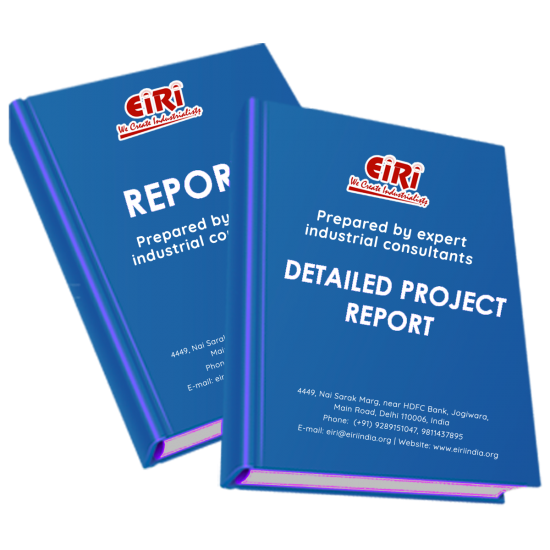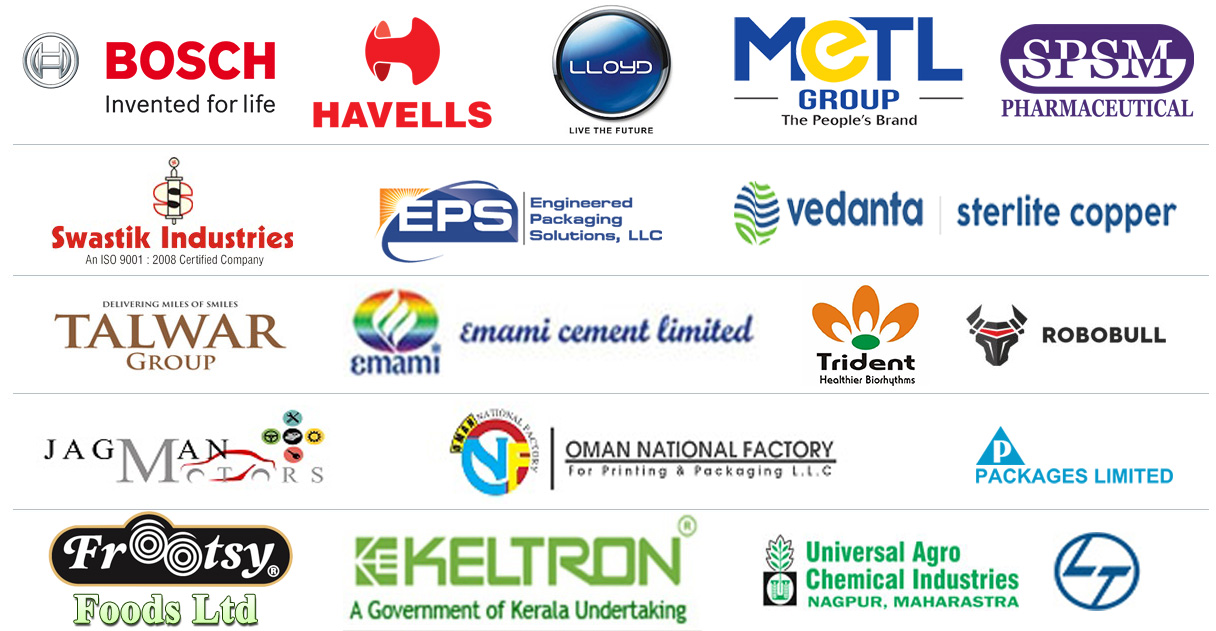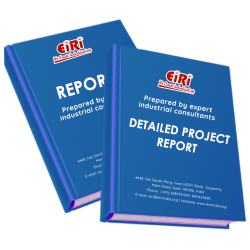Detailed Project Report on organic farming of millets, dairy and vermiculite/vermiculture

- More than 40 years of experience
- Managed by expert industrial consultants
- ISO 9001-2015 Certified
- Registered under MSME, UAM No: DL01E0012000
- 24/5 Research Support
Get your quesries resolved from an industry expert. Ask your queries before report or book purchase. - Custom Research Service
Speak to the our consultant to design an exclusive study to serve your research needs. - Quality Assurance
All reports are prepared by highly qualified consultants & verified by a panel of experts. - Information Security
Your personal & confidential information is safe & secure.
ORGANIC FARMING OF MILLETS, DAIRY
AND VERMICULITE/VERMICULTURE
[CODE NO.3724]
In the present agricultural scenario, crop yield is declining day by day despite maximization of chemical inputs. Vicious cycle of chemical farming is now exposed in the increasing crop un-sustainability, higher input requirement, poor soil quality as well as recurrent pest and disease infestation. Moreover, in the pretext of climate change yield interference has become quite predictable under the unpredictable weather conditions vis-a-vis hike in biotic potential. The excess/indiscriminate use of pesticides and fertilizers has led to the entry of harmful compounds into food chain, death of natural enemies and deterioration of surrounding ecology. Enhanced use of pesticide has resulted in serious health implications to man and his environment. Hence, enhancement and maintenance of system productivity and resource quality is essential for sustainable agriculture. Organic farming can solve many of these problems as this system helps to maintain soil productivity and effectively control pest by enhancing natural processes and cycles in harmony with environment. Today, it is clear to the agricultural community that organic farming is the best option for not only protecting/sustaining soil-plant –ecological relationship but to mitigate the adverse effect of climate change. However dearth of proper technological advancement is the major hindrance towards achieving the true objectives of organic farming. In this background, an Indian organic farming practice called Inhana Rational Farming (IRF) Technology has demonstrated some promising results that have brought bring forth the relevance of organic farming in today’s agricultural scenario.
Though the organic movement was initiated over a decade ago it has failed to gain the expected momentum due to several ambiguities. Organic farming is mostly envisaged as the stoppage of synthetic inputs and their replacement by organic alternatives i.e.use of organic manures and natural methods of plant protection instead of using synthetic fertilizers/pesticides. But this is not true. However, organic farming is a far deeper concept that mere non-chemicalization. In real sense it refers to a comprehensive approach towards improvement of both health of underlying productivity of the soil and plant leading to the enrichment of the surrounding ecology; which is a pre-requisite criterion for sustainable agriculture. According to IFOAM, “Organic agriculture is a production system that sustains the health of soils, ecosystems and people”. It relies on ecological processes, biodiversity and cycles adapted to local conditions, rather than the use of inputs with adverse effects. The major objectivity of organic farming resides on development of a self-sustainable farming system in harmony with nature which delivers ecologically and economically sustainable pure food with enrichment of surrounding biodiversity and its entire components.
Millets
Millets are some of the oldest of cultivated crops. The term millet is applied to various grass crops whose seeds are harvested for food or feed. The five millet species of commercial importance are proso, foxtail, barnyard, browntop and pearl. In China, records of culture for foxtail and proso millet extend back to 2000 to 1000 BC Foxtail millet (Setaria italica L.) probably originated in southern Asia and is the oldest of the cultivated millets. It is also known as Italian or German Millet. Its culture slowly spread westward towards Europe. Foxtail millet was rarely grown in the U.S. during colonial times, but its acreage increased dramatically in the Great Plains after 1850. However, with the introduction of Sudan grass, acreage planted to foxtail millet decreased.
Proso millet (Panicum miliaceum L.) was introduced into the U.S. from Europe during the 18th century. It was first grown along the eastern seaboard and was later introduced into the Dakotas where it later was grown on considerable acreage. In North Dakota acreage has ranged from 50,000 to 100,000 acres while in Minnesota only a few thousand acres have been grown.
Today, foxtail millet is grown primarily in eastern Asia. Proso millet is grown in the Soviet Union, mainland China, India and western Europe. In the United States, both millets are grown principally in the Dakotas, Colorado and Nebraska.
Barnyard or Japanese millet (Echinochloa frumentaceae L.), is a domesticated relative of the seed, barnyard grass. It is grown for grain in Australia, Japan and other Asian countries. In the United States, it is grown primarily as a forage.
Browntop millet (Panicum ramosum) is a native of India and was introduced into the United States in 1915. It is grown in southeastern United States for hay or pasture and bird and quail feed plantings on game preserves. It is sometimes sold to Minnesota sportsmen for this purpose. Seed and forage yields of browntop millet have been low in Minnesota tests and it did not compete well with weeds.
Pearl or cattail millet (Pennisetum glaucum) originated in the African savannah and grown since prehistoric time. It is grown extensively in Africa, Asia, India and Near East as a food grain. It was introduced into the United States at an early date but was seldom grown until 1875. It is primarily grown in southern United States as a temporary pasture. It is preferred over sudangrass as a forage crop in the south. Varieties planted at Rosemount, Minnesota produced very little seed, and their forage yield was low compared to foxtail varieties.
COST ESTIMATION
Land & Building (81 Acres) Rs. 32 Cr
Plant & Machinery Rs. 2 Cr
Working Capital for 2 Months Rs. 2.08 Cr
Total Capital Investment Rs. 46.54 Cr
Rate of Return 24%
Break Even Point 43%
INTRODUCTION
VERMICULITE
USES AND COMPOSITION OF MILLET
TABLE: AVERAGE COMPOSITION OF PROSO MILLET.
TABLE: THE AVERAGE COMPOSITION OF FOXTAIL MILLET HAY
AND ITS COMPARISON TO OTHER HAY CROPS.
ORGANIC FARMING AND CERTIFIED ORGANIC
TYPES OF ORGANIC FARMING
USES & APPLICATION OF ORGANIC FARMING
RAW MATERIALS
CONSTRAINTS FACED BY THE INDIAN ORGANIC GROWERS
ABSENCE OF SUPPORTIVE POLICY
LOSS OF CROP YIELD
NON ACHIEVEMENT OF EXPECTED QUALITY
FAILURE OF ORGANIC PEST MANAGEMENT
SHORTAGE OF BIOMASS AND LIVESTOCK
LACK OF QUALITY SEEDS SUPPORTING ORGANIC AGRICULTURE
LACK OF STORAGE, TRANSPORT &ORGANIZED ORGANIC MARKETING
SYSTEM
VESTED INTERESTS OF CHEMICAL AND PESTICIDE LOBBY
LACK OF AWARENESS AND GUIDELINE FOR ORGANIC FARMING
INABILITY TO MEET THE EXPORT DEMAND
COMPLEXITY AND HIGH COST OF ORGANIC CERTIFICATION SYSTEM
SCARCITY AND HIGH COST FOR QUALITY ANALYSIS
PRESENT STATUS AND FUTURE OF ORGANIC FARMING IN INDIA
TABLE: EXPORT OF ORGANIC AGRICULTURAL COMMODITY
FROM INDIA (2014-15 TO 2016-17)
PROSPECTS AND SWOT ANALYSIS OF ORGANIC DAIRY FARMING IN INDIA
STRENGTHS
WEAKNESSES
OPPORTUNITIES
THREATS
TABLE: MAXIMUM NUMBER OF ANIMALS PER HECTARE
(DRAFT INDIAN STANDARD)
WORLD SCENARIO OF ORGANIC FARMING
SOME KEY POINTS
FIGURE 1: DISTRIBUTION OF ORGANIC LAND AS PER USE TYPE
FIGURE 2: PERCENT SHARE OF ORGANIC OVER TOTAL AGRICULTURAL LAND
OVERVIEW OF ORGANIC COTTON IN INDIA
HIGH LEVELS OF PESTICIDE APPLICATION:
CONSUMER PRESSURE:
WIDE GENETIC VARIABILITY:
LONG DURATION CROP WITH AMPLE SCOPE FOR COMPENSATION:
ORGANIC COTTON CULTIVATION IN INDIA – A CULMINATION OF NON- CHEMICAL PEST MANAGEMENT
TECHNOLOGICAL CHALLENGES IN ORGANIC FARMING
MECHANISM OF PLANT ENERGIZATION UNDER IRF TECHNOLOGY
FOLLOWING EEA PRINCIPLE
RANKING OF DIFFERENT PACKAGE OF PRACTICE IN TERMS OF CROP EFFICIENCY & COST PER HECTARE FOR MATURE TEA
TABLE: COMPARATIVE STUDY OF CROP CULTIVATION UNDER IRF ORGANIC & CHEMICAL FARMING PRACTICE (SOURCE: WORLD SCIENCE CONGRESS, 2017)
TABLE: INDIAN SEED CERTIFICATION STANDARD VIS-A-VIS SEEDS
PRODUCED AT BLOCK SEED FARM, CANNING, WEST BENGAL
(SOURCE: CANNING REPORT, 2017).
ORGANIC DAIRY FARMING
OPPORTUNITY AND CHALLENGES IN ORGANIC DAIRY FARMING
BENEFITS OF ORGANIC MILK
KEY ASPECTS FOR ORGANIC MILK PRODUCTION
EU STANDARDS
STARTING CONVERSION
TIME SCALE
FEEDING
FORAGE
CONCENTRATES
MINERALS AND VITAMINS
GRASSLAND
LIVESTOCK MANURES
HOUSING
ANIMAL HEALTH
BSE
EXISTING STOCK
REPLACEMENTS
CALVES
BULLS
SELLING AND BUYING STOCK
ORGANIC COTTON CULTIVATION AND ITS MERITS
MERITS OF ORGANIC COTTON CULTIVATION
(A) ENVIRONMENTALLY FRIENDLY TECHNOLOGY
(B) REDUCTION IN COST OF CULTIVATION
(C) MANAGEMENT OF INSECTICIDE RESISTANCE
CULTIVATION/FARMING METHOD OF ORGANIC COTTON
1] SELECTION OF SITE
2] VARIETAL SELECTION
3] SEED RATE AND SOWING
4] MANURING
A] FARM YARD MANURING [FYM]
B] FODDER COWPEA
C] DHAINCHA (SESBANIA ACULEATA)
D] VERMICOMPOST
E] BIOFERTILISERS
5) TECHNOLOGY FOR COMPOSTING
(I) VERMICOMPOST
(II) COMPOSTING OF COTTON STALKS THROUGH TRICHODERMA VIRIDE
6) WEED MANAGEMENT
7) SELECTION OF ROTATIONS
8) IPM STRATEGIES FOR CROP PROTECTION
ORGANIC CULTIVATION METHOD OF MILLET
A. CLIMATE:
B. SOIL:
C. SEED PREPARATION AND GERMINATION:
CULTURAL PRACTICES:
A. SEEDBED PREPARATION:
B. SEEDING DATE:
C. METHOD AND DATE OF SEEDING:
D. FERTILITY AND LIME REQUIREMENTS:
TABLE: ANNUAL NITROGEN RECOMMENDATIONS FOR MILLET.
TABLE: ANNUAL PHOSPHORUS AND POTASSIUM RECOMMENDATIONS
FOR MILLET.
E. VARIETY SELECTION:
RECOMMENDED FORAGE VARIETY:
OTHER VARIETIES
F. WEED CONTROL:
G. DISEASES AND THEIR CONTROL:
H. INSECTS AND MITES AND THEIR CONTROL:
I. HARVESTING:
J. DRYING AND STORAGE:
YIELD POTENTIAL AND PERFORMANCE RESULTS:
A. MINNESOTA:
TABLE: YIELD AND AGRONOMIC DATA FOR SEVERAL MILLET VARIETIES.
METHOD OF ORGANIC SOYBEAN CULTIVATION AND PESTS &
DISEASE MANAGEMENT
ROW SPACING
PLANT POPULATION
SOIL FERTILITY
WEED MANAGEMENT
INSECT PEST MANAGEMENT
CROP ROTATION
TILLAGE
SOIL FERTILITY AND PH MAINTENANCE
VARIETY SELECTION AND EARLY PLANTING
NARROW ROWS
REMEDIAL MANAGEMENT
MAJOR SOYBEAN INSECT PESTS AND DISEASE MANAGEMENT
CORN EARWORM AND TOBACCO BUDWORM
STINK BUGS
SOYBEAN LOOPER
BEAN LEAF BEETLE
DISEASE MANAGEMENT
ORGANIC CASH CROPPING (CEREALS & SOYBEAN)
LAND BASE
TRANSITION
ROTATION
FERTILITY
ESTABLISHMENT
SOYBEANS
CEREALS
CHALLENGES
WEED CONTROL
ELEMENTS OF ORGANIC COTTON CULTIVATION
VARIETALS SELECTION
SEED RATE AND SOWING
SOIL FERTILITY
WEED MANAGEMENT
PEST MANAGEMENT
BIOCONTROL BASED PEST MANAGEMENT
METHOD OF ORGANIC FARMING FOR BANANA
ORGANIC PRODUCTION:
CLIMATE AND SOIL
LAND PREPARATION
VARIETIES
PLANTING MATERIAL
PLANTING AND INFILLING
INTERCROPPING
MANURING
IRRIGATION
INTERCULTURE OPERATIONS
PROPPING
MULCHING
DESUCKERING
OTHER OPERATIONS
PLANT PROTECTION
HARVESTING
YIELD
LINKAGES:
VERMICULTURE
VERMICULTURE PROCESS
SELECTION OF SUITABLE SPECIES
PRELIMINARY TREATMENT OF COMPOSTING MATERIAL
PRE-TREATMENT OF LEAF LITTER AND AGRICULTURAL WASTE
VERMICULTURE AND POLLUTION HAZARD
MANUFACACTURING PROCESS OF BIO COMPOST
FROM FARMYARD FARMING:-
COMPOSTING:-
PROCESS FLOW SHEET FOR THE MANUFACTURE OF COMPOST
SUPPLIERS OF RAW MATERIALS
SUPPLIERS OF PLANT AND MACHINERY
APPENDIX – A:
01. PLANT ECONOMICS
02. LAND & BUILDING
03. PLANT AND MACHINERY
04. OTHER FIXED ASSESTS
05. FIXED CAPITAL
06. RAW MATERIAL
07. SALARY AND WAGES
08. UTILITIES AND OVERHEADS
09. TOTAL WORKING CAPITAL
10. TOTAL CAPITAL INVESTMENT
11. COST OF PRODUCTION
12. TURN OVER/ANNUM
13. BREAK EVEN POINT
14. RESOURCES FOR FINANCE
15. INSTALMENT PAYABLE IN 5 YEARS
16. DEPRECIATION CHART FOR 5 YEARS
17. PROFIT ANALYSIS FOR 5 YEARS
18. PROJECTED BALANCE SHEET FOR (5 YEARS)
How to Make Project Report?
Detailed Project Report (DPR) includes Present Market Position and Expected Future Demand, Technology, Manufacturing Process, Investment Opportunity, Plant Economics and Project Financials. comprehensive analysis from industry covering detailed reporting and evaluates the position of the industry by providing insights to the SWOT analysis of the industry.
Each report include Plant Capacity, requirement of Land & Building, Plant & Machinery, Flow Sheet Diagram, Raw Materials detail with suppliers list, Total Capital Investment along with detailed calculation on Rate of Return, Break-Even Analysis and Profitability Analysis. The report also provides a birds eye view of the global industry with details on projected market size and then progresses to evaluate the industry in detail.
We can prepare detailed project report on any industry as per your requirement.
We can also modify the project capacity and project cost as per your requirement. If you are planning to start a business, contact us today.
Detailed Project Report (DPR) gives you access to decisive data such as:
- Market growth drivers
- Factors limiting market growth
- Current market trends
- Market structure
- Key highlights
Overview of key market forces propelling and restraining market growth:
- Up-to-date analyses of market trends and technological improvements
- Pin-point analyses of market competition dynamics to offer you a competitive edge major competitors
- An array of graphics, BEP analysis of major industry segments
- Detailed analyses of industry trends
- A well-defined technological growth with an impact-analysis
- A clear understanding of the competitive landscape and key product segments
Need Customized Project Report?
- Ask for FREE project related details with our consultant/industry expert.
- Share your specific research requirements for customized project report.
- Request for due diligence and consumer centric studies.
- Still haven't found what you're looking for? Speak to our Custom Research Team
About Engineers India Research Institute:
Note: We can also prepare project report on any subject based on your requirement and country. If you need, we can modify the project capacity and project cost based on your requirement.
Our Clients

Our Approach
- Our research reports comprehensively cover Indian markets (can be modified as per your country), present investigation, standpoint and gauge for a time of five years*.
- The market conjectures are produced on the premise of optional research and are cross-accepted through associations with the business players
- We use dependable wellsprings of data and databases. What's more, data from such sources is handled by us and incorporated into the report
Why buy EIRI reports?
- Our project reports include detailed analysis that help to get industry Present Market Position and Expected Future Demand.
- Offer real analysis driving variables for the business and most recent business sector patterns in the business
- This report comprehends the present status of the business by clarifying a complete SWOT examination and investigation of the interest supply circumstance
- Report gives investigation and top to bottom money related correlation of real players/competitors
- The report gives gauges of key parameters which foresees the business execution






















